Making a Maintenance-Of-Way Track Cleaning Car From A Caboose
General
This page is to show how I made a track cleaning car out of a caboose car for which I had no other use.
A small piece of maple veneer is hot-glued to a floating bracket between the wheels of the first truck and drags along the track to loosen big chunks. A second piece of verneer between the wheels of the second truck has a piece of felt glued to it.
A tiny bit of alcohol on the felt cleans up the track after the wood breaks the chunks loose.
I wanted the cleaning elements to be under the two trucks not between the two trucks. By bending a paper clip, then attaching it around the rear axle of each truck I made an arm for holding and guiding the floating bracket. A piece of maple verneer was hot-glued to the floating bracket, together with a lead weight, to do the cleaning.
Details
As you can see from the first diagram I bent the paper clip wire around a nail to form the arm.
Next, I made a small bracket out of some thin aluminum, about 0.600 inch by 0.600 inch
that would float on the wire arm and lay on the track.
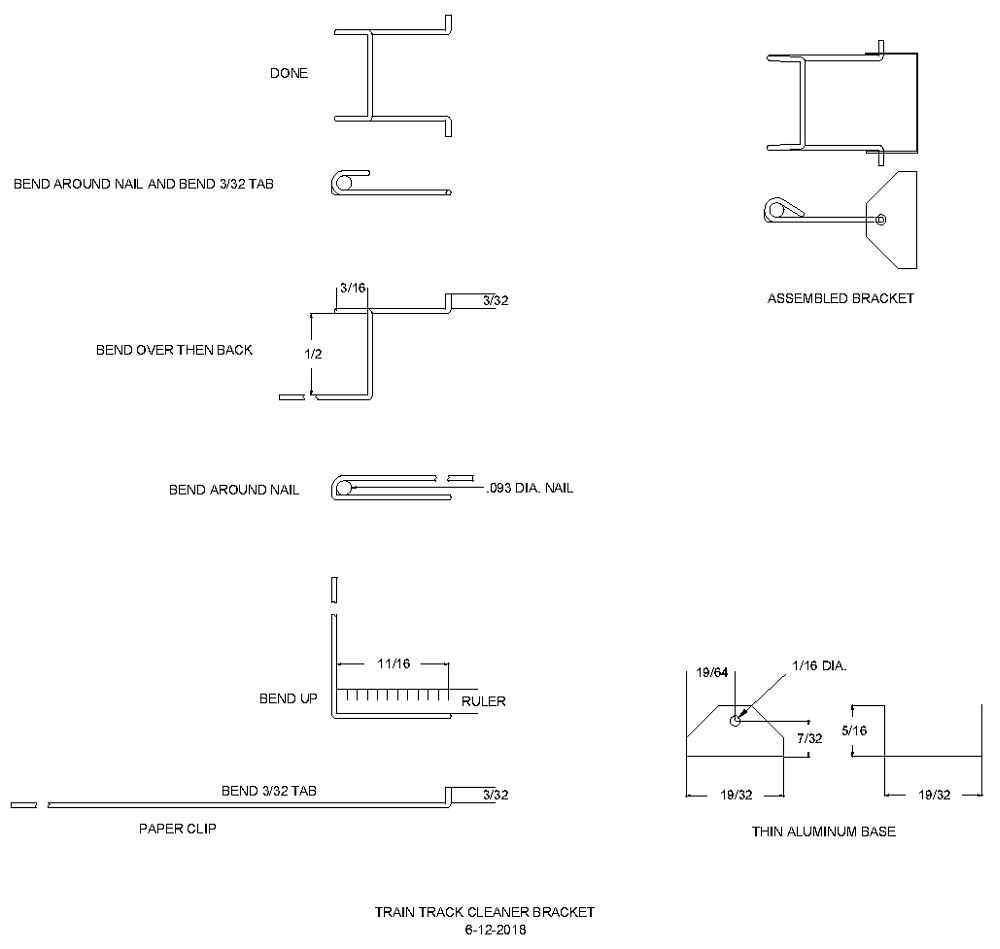
Paper Clip Bending, Aluminum Bracket Bending, and Assembly Diagram
|
In the photos below you can see the arms connected to the truck axles, the brackets attached to the arms, the lead weight and the verneer glued to the brackets, and the felt glued to one of the verneer cross pieces.
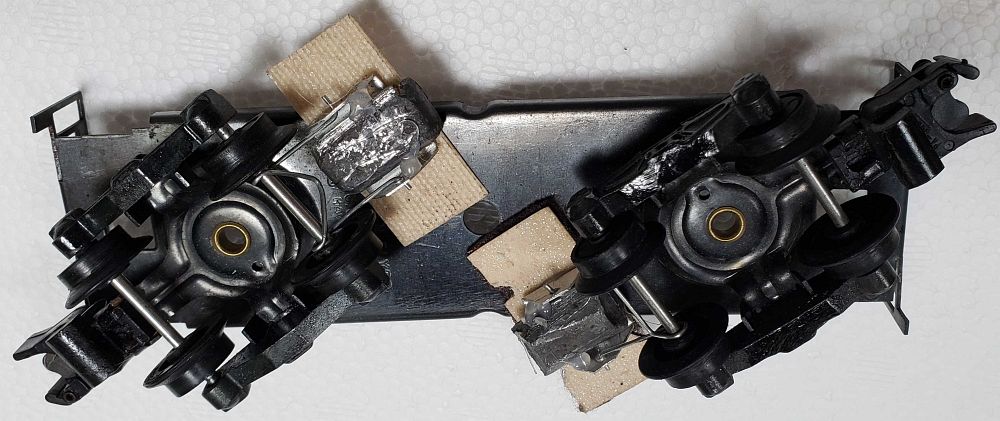
Truck Placement
|
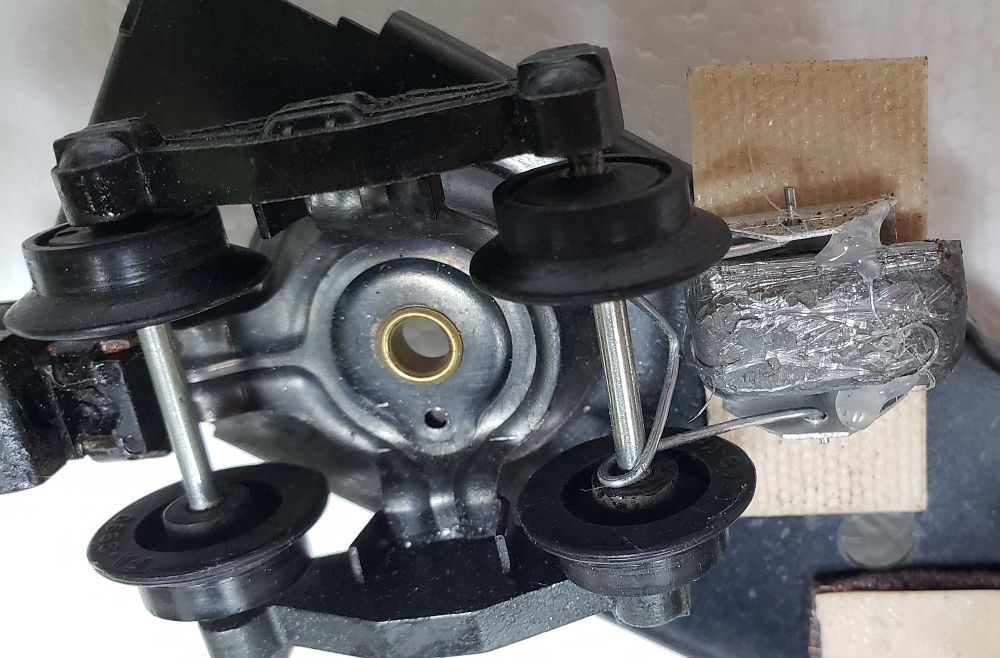
Truck Placement Enlarged
|
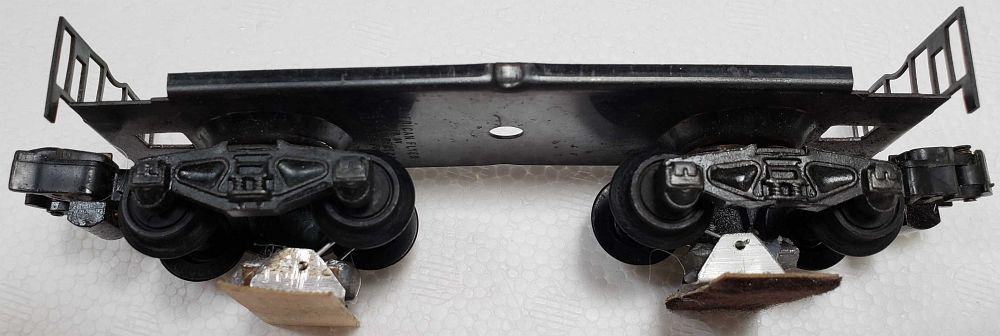
Cleaner Elements on Trucks, Extended
Note Cut Off Second Truck
|

Cleaner Elements on Trucks, Contracted
|
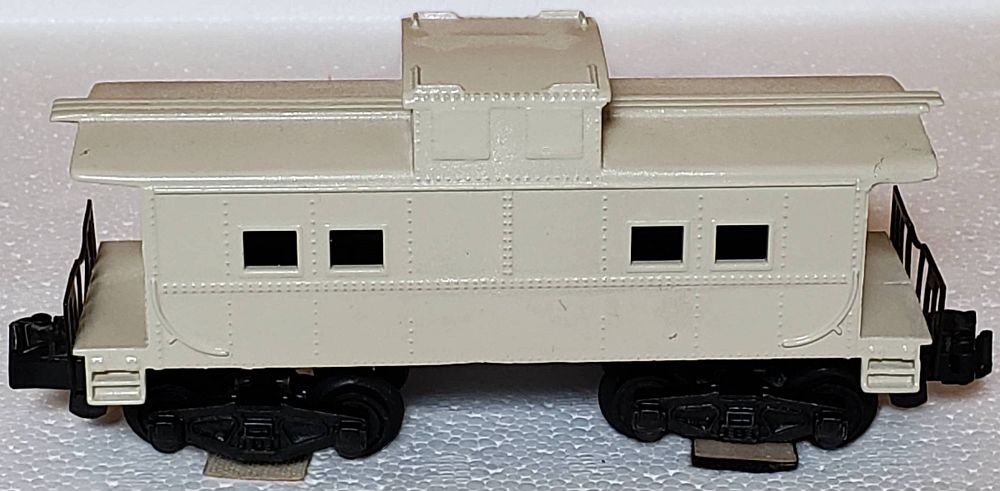
Final Product
|
Notice the second truck that holds the felt bracket had to be ground down to allow room for the felt thickness.
The repurposed caboose has the cupola windows boarded shut, and is painted off-white because of a photo I saw of an actual Maintenance of Way Department car modified that way.
Does It Work?
I have two American Flyer S-Gauge trains that are only set up for a few weeks at Christmas. One set has the old style coupler, so I can't use this car with it. The "newer" set has three more cars and goes up and down due to some trestles. Track is cleaned as I set up the trains after Thanksgiving, so track for both sets start clean. The track cleaner car has only been used one season. On the set without the cleaner car I had a few dead spots occur due to some black crud building up. On the set with the cleaner car I didn't have any stoppage, but I did see some build up of crud when I took the trains apart after Christmas. Is the difference due to the car, or is it due to the difference in age of the plastic wheels?
I will continue to use the cleaner car, and might build another one for the older set if I get a free caboose. It doesn't seem to hurt anything, and it may be helping.
Alcohol
My cleaning solution is not IPA (Isopropyl Alcohol). It is EA (Ethoxalated Alcohol) mixed with water. The old formulation of Shout stain remover was mostly ethoxalated alcohol with a few other ingredients. The formulation of Shout seems to have changed, and now there are different varieties on the store shelves. Shout was what I first used, but have since swithed to High-Yield Spreader Sticker Non Ionic Surfactant by Voluntary Purchasing Group 31062 from Amazon. It is 90% ethoxalated alcohol. The 16 oz bottle would last about 9 lifetimes if I had a 100 train layout running 24/7. I use most of it for gardening purposes.
Ethoxalated alcohol is a non_ionic detergent that is made from a fatty alcohol at one end of a molecule and ethyl oxide at the other end. The alcohol end encapsulates oil and the ethyl oxide end attaches to water. A big difference between ethoxalated alcohol and soap is that ethoxalated alcohol does not corrode the metal track. It is also slower to evaporate than IPA. My felt pad with EA and water can traverse all my track without drying out.
I was testing a broken plastic truck coupler soaking in my cleaning solution to make sure that long exposure to EA did not affect the old plastic formulation used by American Flyer on wheels and couplers. Unfortunately, I have misplaced the jar containing my test sample. Lesson learned: never clean out your basement.
My mixture is 150 ul (0.15 ml) of ethoxalated alcohol to 100ml of distilled water.
Copyright Dale Thompson,
14 June 2018 through
last revision on 1 December 2020.